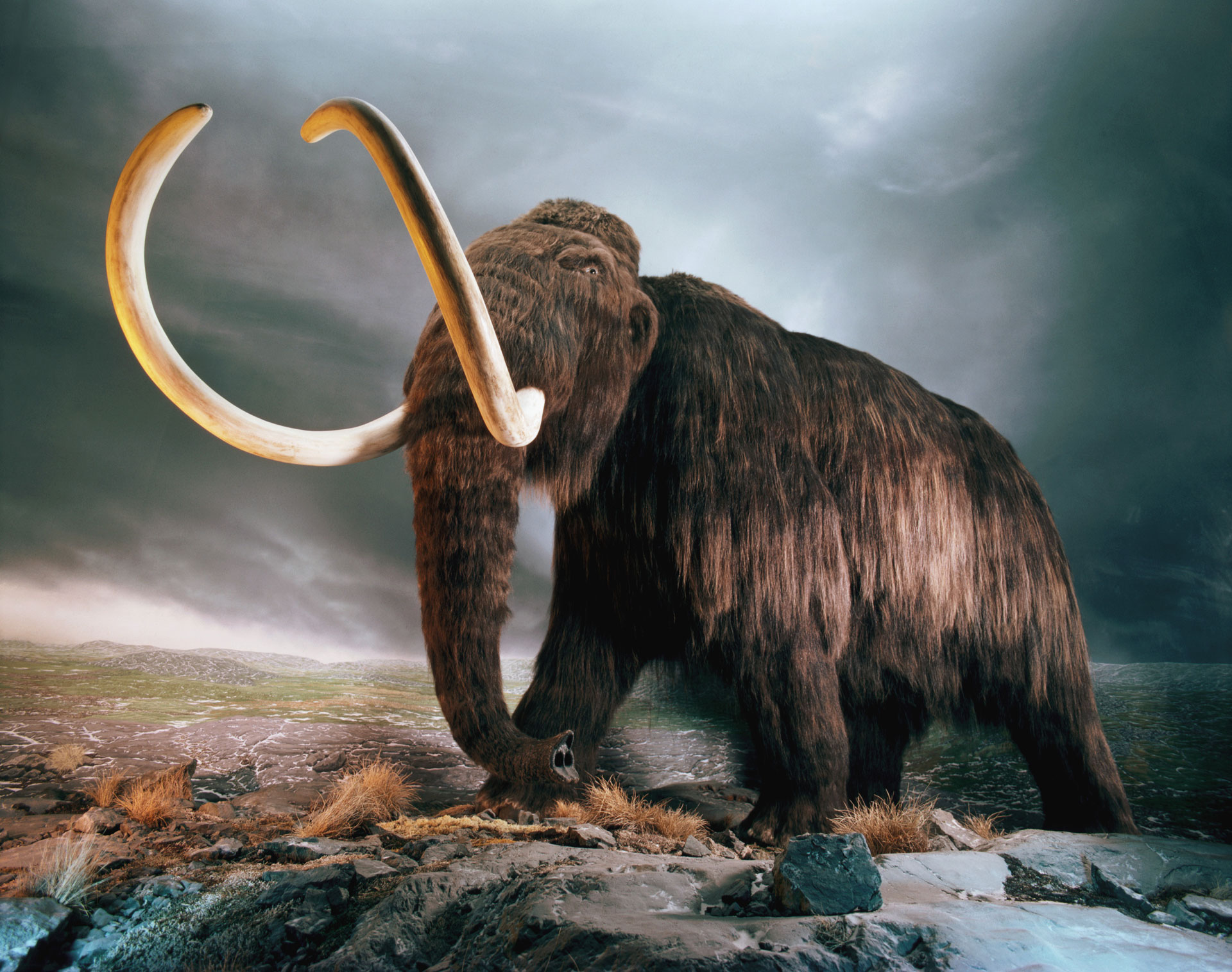Investigadores de la Universidad de Alaska Fairbanks, EEUU, han sugerido una nueva hipótesis sobre las causas que llevaron a los mamuts a extinguirse, hace 8000 años, sobre el 6000 a.C.
La mayoría de mamuts desapareció hace unos 12000 años, aunque quedaron ciertos reductos. Uno de estos reductos ha sido estudiado por los científicos, afirmando que hubo una pequeña colonia de mamuts en la isla de Saint Paul, en Alaska, que terminó muriendo por falta de recursos.
Durante la última glaciación todo el estrecho de Bering estaba totalmente congelado, conectando de esta manera los continentes asiático y americano; por lo tanto, las islas presentes en el estrecho de Bering, como las Aleutianas o la isla de Saint Paul, pertenecían a territorio continental. Conforme el deshielo fue avanzando, los mamuts emigraron a zonas frías como es el caso del estrecho de Bering. Cuando el deshielo llegó finalmente al estrecho de Bering, el "puente" entre Asia y América desapareció y solamente quedaron islas entre medias, por lo que los mamuts se quedaron en estas islas, obviamente "aislados", pereciendo por falta de recursos, especialmente por la falta de agua dulce. Por lo que no es nada descabellado decir que los últimos mamuts murieron de sed.
Los investigadores dan una fecha exacta de la muerte de los últimos mamuts según los restos encontrados en Saint Paul: hace 5600 años, coincidiendo con un período de sequía y de pérdida de calidad del agua en el estrecho de Bering. El hecho de que hubo una sequía fue deducido tras el análisis de isótopos radiactivos de oxígeno en muestras fosilizadas de microorganismos de aquella época, los cuales aseguran que el nivel de los lagos de la isla de Saint Paul fue progresivamente bajando. El estudio de los isótopos radiactivos de dientes y huesos de mamuts de aquella época también certifica un aumento de las temperaturas y unas condiciones cada vez más secas.
Este hallazgo demuestra que el cambio climático puede afectar drásticamente a la fauna de una isla, especialmente de una isla en latitudes tan altas, cerca de los polos. Actualmente, muchas especies podrían experimentar las mismas condiciones o incluso peores con el cambio climático actual.
Researchers from Alaska Fairbanks University, USA, have suggested a new hypothesis about the causes of the extinction of mammoths 8000 years ago, about 6000 BC.
Most of the mammoths disappeared 12000 years ago, but some colonies resisted. One of these colonies has been studied by scientists, being located in the island of Saint Paul, Alaska, which ended up dying due to the lack of resources.
During the last glaciation, the Bering strait was totally frozen, connecting Asia and America; therefore, all the islands located nowadays between both continents, as the Aleutians or Saint Paul were part of the mainland. As the thaw went on, mammoths migrated to colder zones, as the Bering strait. When the thaw finally came to the Bering strait, the "bridge" connecting America and Asia disappeared and only the islands we know nowadays remained above the water, so the mammoths had to live in these islands, being totally isolated and dying due to the lack of resources, specially for the lack of fresh water. So it is not anything strange to say that mammoths died of thirst.
Researchers provide an exact date for the death of the last mammoths: 5600 years ago, in a period of draught and loss of quality of the water in the Bering strait. The fact concerning there was a drought was deduced after an analysis of the fossils of microorganisms of those times, containing radioactive isotopes of oxygen, which showed that levels of the lakes in the island of Saint Paul were lower and lower. The study of the radiactive isotopes in the teeth and bones of mammoths of those times also certifies an increase of the temperatures and dryer conditions.
This discovery certifies that the climate change can change drastically the living conditions of the animals living in an island, specially in high latitudes, close to the poles. Nowadays, lots of species could experience the same conditions, or even worse, with the current climate change.
Para más información / For more information: http://www.abc.es/ciencia/abci-acabo-mamuts-alaska-201608012137_noticia.html

No hay comentarios:
Publicar un comentario